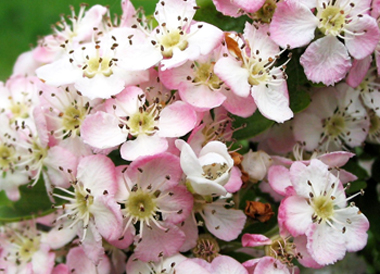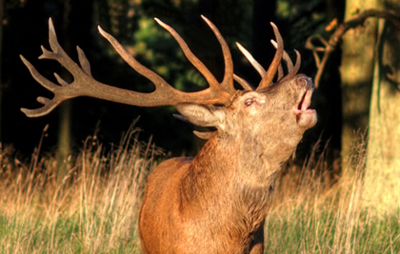Beltane
Here are Jan's thoughts:
 We have come to the third of those festivals that celebrate the bursting forth of life which is Spring. Here, the energies have built an undeniable power which must inevitably explode into fulfilment and fruition. The Earth goddess is, here, both receptive and welcoming. And the Lord stands proud and free in all his rampant glory. From this you will gather that this is not only a Fire Festival, but also one with a great many sexual undercurrents. That said, it is also a time where deep and loving commitments are made, one person to another.
We have come to the third of those festivals that celebrate the bursting forth of life which is Spring. Here, the energies have built an undeniable power which must inevitably explode into fulfilment and fruition. The Earth goddess is, here, both receptive and welcoming. And the Lord stands proud and free in all his rampant glory. From this you will gather that this is not only a Fire Festival, but also one with a great many sexual undercurrents. That said, it is also a time where deep and loving commitments are made, one person to another.
This is a very popular period for handfastings – the uniting of two people in a shared commitment for a year and a day - perhaps because of the intensity of passionate energy inherent here.
If you follow through the logic which has threaded each of these last ceremonies, you will see Imbolc plants the seed, the Vernal marks its germination and gathering strength – and here we see that same energy gathering to itself the strength which will eventually leading to fruiting, and a fertile harvest. In many senses, therefor, Beltane is a blessing ceremony. It not only imbues the swelling buds with the promise of bounty; it also introduces the concept of fertility to all living and growing things.
Another tradition that might have grown up as a result of the blessing aspect of this ceremony is that of well-decking. Sacred springs and wells were often garlanded with flowers (especially hawthorn) on Beltane. This acknowledged the gift of pure water, and also of the healing qualities many such wells and springs were credited with.
Beltane is, actually, a ceremony surrounded by considerable controversy – not least in relation to its origins. Some claim Teutonic beginnings for this festival, whilst others place it firmly in the Celtic camp. One thing of which we can be certain is that across Europe, fire ceremonies were widely celebrated at this time of year. Some of these were seen as purification processes, and others as fertility rites. What stands out, among other things, is that there is no Christian equivalent for Beltane – this is unusual in terms of the more ancient and traditional pagan ceremonies. Could this be a reaction against the very rumbustious energies represented here, I wonder?
For us, Beltane stands out amid the Celebrations of the Year Wheel because it is the only one in which we follow the Celtic tradition. This is mostly as a result of one of our number lobbying most determinedly for this most pagan of ceremonies. After much insistence we all finally agreed that a slight detour would be welcome and enjoyable.
We operate under full Celtic watchtowers, and the ceremony is chiefly dedicated to Cernunnos, the Horned God. It is said of him that he is born at Midwinter, weds the Goddess at Beltane, and is sacrificed at the Summer Solstice. On the Eve of his wedding Cernunnos is said to run through the forest with stags, to test his fitness and potency.
When he is called forth, the invocation is accompanied by a tattoo beaten with a ribbon-bedecked staff reserved entirely for this purpose. Woven amid the ribbons are bells, so the tattoo is a sort of knocking, chiming affair. The altar – red of course – is adorned with hawthorn boughs – and it is considered a particularly bad omen if the hawthorn is not in full blossom.

There’s a wealth of folklore about the hawthorn which is well-worth considering when thinking about Beltane. For example, in Britain at least the hawthorn is widely regarded as one of our most sacred and mystical trees – home of the fae, a portal between this world and the Land of Faerie . And this day of celebration is regarded as the only day of the year where it is considered safe to bring it into the house.
This is always a stimulating and exciting ceremony which has a way of providing some surprisingly vivid and fascinating seerwork – this most usually connected to natural cycles.
If you do not want to get yourself too deeply involved in ritual celebration there are plenty of other things you can do to acknowledge Beltane – have a carefully controlled bonfire, cook potatoes in the embers, and share them with people you love as dusk slips into night. What the patterns the sparks trace against a darkening sky. And then put your fire out, thoroughly and carefully of course
And here is what Graham says:

Beltane is a spring festival that's traditionally celebrated on the first of May. In the UK there is a bank holiday on the first Monday of May, so there's usually a long weekend around Beltane. It can also be marked by the mid point of the sun's transit through Taurus, which can place it around the 8th of May. Often this weekend is marked by fairs which can be small and local or major events like the ‘Obby ‘Oss festival at Padstow in Cornwall, and the Sweeps Festival in Rochester, Kent. Both of these events have a national reputation and can attract tens of thousands of people. Regardless of size, these usually feature local stalls, Punch and Judy and there is always Morris Dancing.
This is a form of folk dancing that doesn't really exist outside England. It features traditional dances, with accordians, fiddles and drums. At this time of year there is a central figure – sometimes a horse representation, often with a skull on a stick – the hobby horse that gives the Padstow celebration its name - or a green man. This will be a figure covered in foliage and ribbons. In some cases they look like walking trees. Whatever the costume, these are all fertility figures and the folklore surrounding them usually involves local customs about girls being kissed or dancing with the green man to ensure they'd fall pregnant over the next year.
There might have been a custom of the young people going out into the woods overnight and then coming back through the community the next morning to bless the farms that they passed. It's hard to find any concrete evidence but this was possibly a night of indulgence for the unmarried youth of a community. It is worth remembering that the idea of chastity before marriage is relatively recent when compared to the length of time over which the Wheel has been celebrated. Also, there appear to be faint echoes that all festivals had some form of procession through the area occupied by a tribe. Definite survivors are trick or treating, carol singing and beating the bounds.
The link between Beltane and Halloween is interesting, because Beltane is exactly opposite Halloween on the Wheel of the Year. Beltane is about fertility and sex, whereas (on a basic level) Halloween is about death. These are two sides of the same coin and are both concerned with the basic physicality and cycle of life.
This is also one festival that hasn't been adopted or changed much by Christianity, probably because at a high theological level, Christianity sees the spirit as divorced from the physical world and trying to rise above it. Paganism on the other hand seeks to synthesise the two opposites of spirit and physicality. This is especially obvious at this festival with its carnal overtones.

The disjoint from Christianity is emphasised by the fact that the Gods associated with Beltane are either Green Men, or semi-human goat or deer Gods, like Pan. This image especially has been used to represent the Christian devil. On the other hand, many churches feature Green Men discretely carved into the rafters. I think in a rural community the church recognised that fertility was still needed on the farm.
At this time of year in a traditional farming calendar, two fires would be lit and the livestock driven between them, through the smoke, to clear their coats of ticks and other parasites. While this is clearly now outdated, Beltane fire festivals still exist into the modern day, being especially popular in Scotland.
Beltane is the third of the Spring festivals and is the one most closely connected with fertility and especially the male aspects of that. It's a traditional fire festival in the middle of an earth sign. Along with the Morris Dancing and Punch and Judy, May-poles are another important aspect of this festival. They work on many levels, firstly in that they have alternating young men and women dancing together. Secondly on a symbolic level this is the intermingling of male and female energies to create new life. Finally, it is also a phallic symbol. Male energy is quick and instinctive, rising sharply before dying off. When it meets the constant, nurturing female energy then life is created.
This process can apply to literal procreation or to the formulation of ideas and plans, or to the execution of magic powered by the Wheel. In terms of developing progress with plans or intents, this would be a time of year to push forward, in small bursts of energy followed by a period of rest.
Good colours for this day are bright and vibrant – usually greens and reds. When we decorate for this season, we use bells as well as these colours. These give us a nice visual echo back to Morris Dancers, both in colour and in sound. This festival should occur at the end of spring, a time of maximum growth, when summer is just around the corner.
In terms of Gods and Goddesses associated with this festival, this appears to be a more God focused day. I don't know if this is in the nature of the festival or if it's just what has survived over the past few thousand years. Although, that being said, the May Queen is an important figure in many celebrations.

Stags are an important animal for this time of year. You can imagine that some five thousand years ago a shaman with a stag head dress would lead celebrations. Today that imagery continues in the idea of a stag night – when the man who's about to be married goes out for a last party. There appear to be some very old echoes between the two.
Aside from all greenery as represented by the Green Man, there is one special plant for this time of year – Hawthorn. It is sometimes called May Tree so closely is it entwined in this festival. It is a very magickal plant, with lots of folklore associated with it. It is said to be unlucky to cut down a tree as it is home to faeries. It is also called the lightening tree – another reference to the quick, fertilising energy that blasts through this day.
For food, we tend to honour the solar aspects of this day with spicy and Mexican food. Once again, seasonal food and especially green leafy salads are good. Likewise, sensuous deserts like chocolate mousse are nice at this time.
Beltane is a good time to get out and celebrate a genuinely pagan festival within your community. Enjoy the sights, sounds and experience of Morris Dancing, browse stalls and soak up the ancient feel of this festival.
